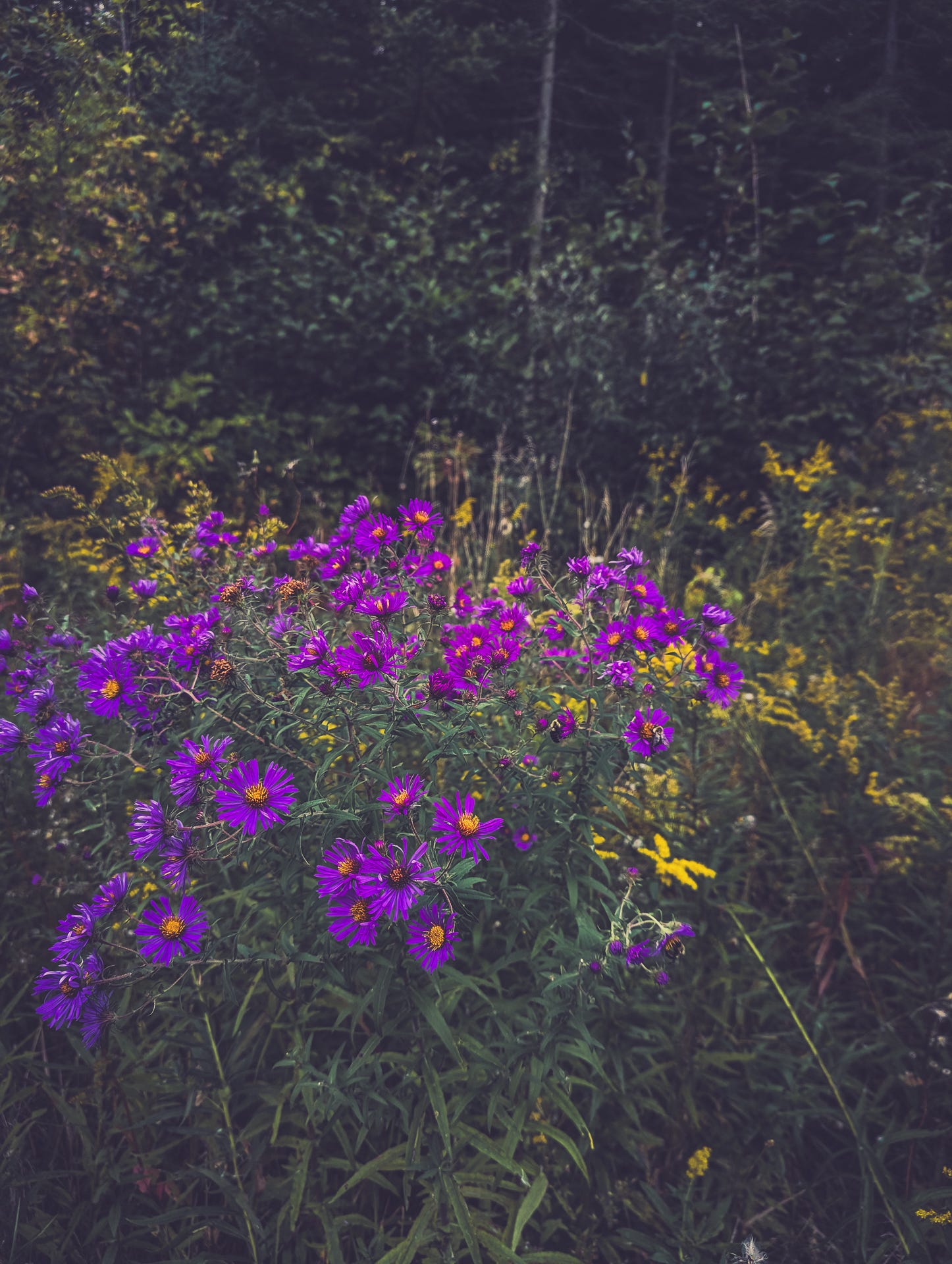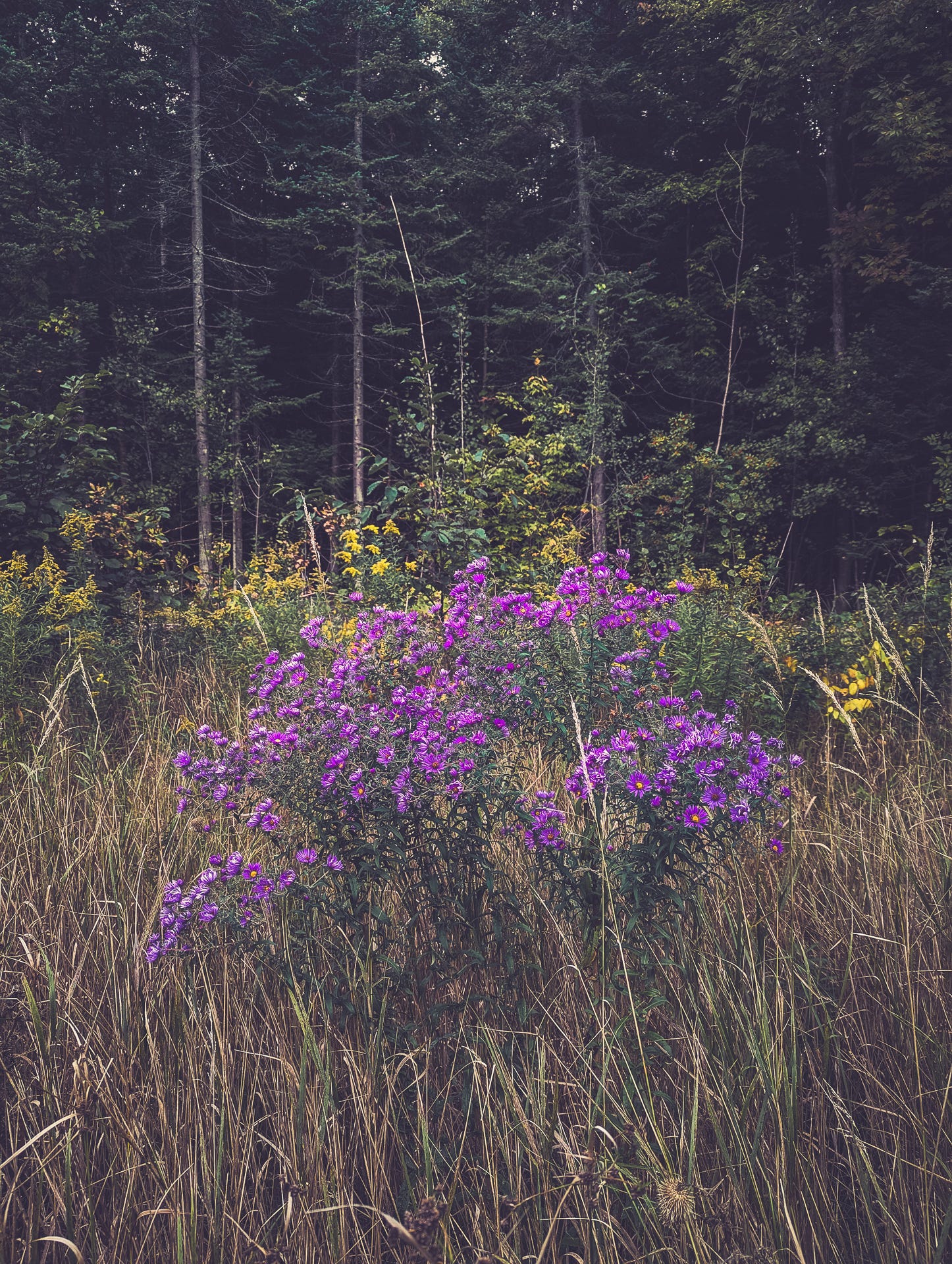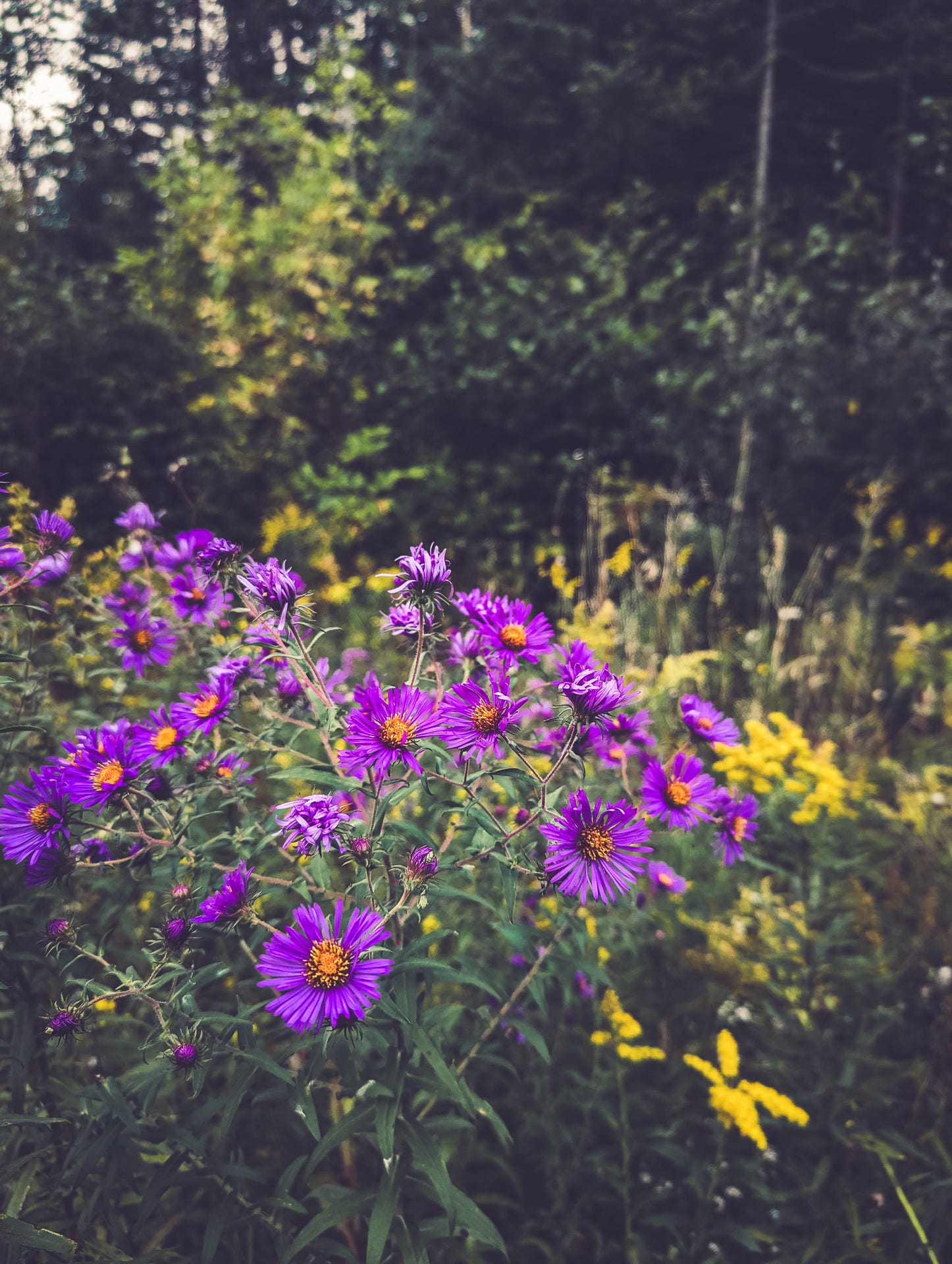There is something mysterious and unique about plants that share the same soil, thrive in the same environment and drink in the same rays of sun.
I often wonder how two plants ended up in the same place: did they come for each other or the soil?
There are no answers to that thought, maybe there shouldn’t be. It is a relationship that I don’t think us humans have given much attention to. Sure we know a bit about the mycelial connection between fungi and tree roots, but this is just the first thread of the tapestry.
The mycelial network is also a relationship that can be physically studied with our own human tactics. But what about the plants that live with and lean on each other without that physical connection? Might there still be something there that we’ve missed?
Even herbalists will often hone in on one plant in the environment for its medicine, without giving too much thought to the greater symphony at work. However, we can begin to explore these more subtle types of plant relationships through more creative means, such as through their medicine.
Jim McDonald was the first one to start this trail of interwoven crumbs for me. He pointed out on one of his plant walks that you will often find jewelweed growing amongst poison ivy. To the passerby this is simply a result of both plants preferring similar soil and landscapes. But when you begin to dive into their medicine, you will find there is a greater story playing out.
Poison ivy is a plant known to even non-plant people for its itchy rash-inducing properties caused by an oily resin present on its leaves, stems and roots called urushiol. Jewelweed however, is its perfect counterpoint. It contains a holy trinity of kaempferol, quercetin and lawsone compounds, which negate the effects of the urushiol. In short, jewelweed reduces the pain and swelling caused by poison ivy { particularly when made into a soap }.
Maybe this still seems like nothing of note, but to those of us who look for signs and connections between all things, this is significant. It seems like no coincidence that a plant that causes rashes grows hand in hand with a plant that cures them.
There is a metaphor in there somewhere about how the things that ail us may also lead us to healing, even if not readily apparent.
Perhaps you can still write this off as a coincidence. But the fact is that this happens everywhere throughout nature. One relationship that is particularly relevant in this season is a pair that is hard to miss. As the autumn equinox delivers us beautifully into yet another season, the wilds celebrate with gatherings of dancing goldenrods and New England asters { Aster novae-angliae }.
Artists specifically will note that their complimentary shades of plum and gold, appearing directly across from each other on the color wheel, alone announces them as soil mates. I’m not sure there’s anything more striking than seeing these two waltz in the wind. These two autumnal flowers go deeper than aesthetic value though.
Unlike poison ivy and jewelweed, goldenrod and aster don’t counterbalance one another. Rather, like their colors, they are complimentary. As we move into cold and flu season, these two appear at the perfect time { as plant medicine tends to do }. They act as a bit of a tag team. Goldenrod focuses on the upper respiratory system with its drying and draining actions on the sinuses. New England aster on the other hand, travels to the lower respiratory system with its moistening anti-spasmodic properties. So whether you are experiencing damp stagnant upper respiratory issues or tight dry lower respiratory issues, these two have you covered. They are a perfectly even weight to each side of the scale.
There is also another, more hidden, relationship in the fields of goldenrod and aster. Ragweed also likes to hang around goldenrod. This allergy-inducing plant often passes the blame onto goldenrod in fact. Because goldenrod is more flashy than ragweed, most assume goldenrod is the culprit for their runny noses and puffy eyes. But goldenrod is forgiving despite the blame. Like poison ivy and jewelweed, goldenrod can also help to relieve allergy issues that ragweed incurs.
Observing these little dramas is just the beginning. There are many other plants that grow besides each other and either compliment or counteract the other’s medicine. Blueberry and sweet fern, nettle and plantain, motherwort and catnip. The list goes on. And of course these are just the relationships that jump out at me as an herbalist. There are no doubt other relationships that I overlook, but would be noticed by someone with a different perspective.
Witnessing how plants interact not just with us humans, but also with their plant companions can teach us so much about their medicine, their spirits, their core essence. If anything, it brings us closer to believing and truly feeling that we are all indeed connected.
It’s easy to say all things are connected, but it’s another thing to feel it deep within the spirit, to let it seep into our sea salt veins and flow through our earth-made bones. This is what the plants offer us.
& finally a bit of wisdom which I’m sure you will remember from the goldenrod and aster chapter of Braiding Sweetgrass:
That September pairing of purple and gold is lived reciprocity; its wisdom is that the beauty of one is illuminated by the radiance of the other.
An invitation
I love this platform and am so happy that I decided to move the newsletter here. I love how it allows writers to grow and connect, how it feels like the pressures of social media are so far away. But one thing I want to explore more is how we can interact and communicate a bit more. Sending out newsletters can sometimes feel like shipping words into the void, without knowing how they are being received by others. Don’t get me wrong, it’s great just to write, but I’d love to cultivate more than just my own words. The thoughtful comments some of you have left on my previous newsletters are my favorite part of all of this.
So, at the end of each newsletter I wanted to do something a little different. I’ll offer a little invitation to share your own thoughts and experiences about a particular topic. This will hopefully also inspire deeper insight into your own relationships with the world around and within you. You all are so intelligent and intuitive. I would love to learn from you too { if you feel so called of course }. You can join in by leaving a comment over on Substack if you aren’t on here already.
So, the first invitation is this:
What relationships have you witnessed between plants in the wild; whether it be through their medicinal actions, culinary uses, aesthetic appeal, spiritual connections, or beyond?
Much love,
Val
If you want to move deeper into a seasonal land-based life, consider pre-ordering my 2024 edition of the Lunica Planner. Because learning to live in tune with the land doesn’t come from grand gestures or life-altering shifts, but rather from daily routines, devotions and observations of the land and how we relate to it.
This yearly planner weaves seasonal land-based practices with modern living so that you can live more intentionally and presently within every season of your life. It was created for the plant people, the land lovers, the gardeners, and the seekers to plan their lives around the rhythms of the earth as our ancestors have for thousands of years. More than just a planner, Lunica is a practical yet spiritual guide to living, working, gardening, and celebrating in tune with the ever-shifting world around us.
Purchasing a planner also helps support this publication!
Share this post with your plant friends!
And if you’re not already subscribed to The Medicine Garden, sign up to receive more plant love directly to your inbox. No spam, just an herbalist and gardener sharing her stories.








Somehow I knew, or felt I knew, even as a young child, that God would put on earth everything we would ever need to heal ourselves. I don't remember being told this or how I came to this understanding, but I was young, maybe 7 or 8. I feel that plants and other natural substances (minerals, crystals, etc) are also found near PEOPLE that they are meant to help. I landscape for a living and I've seen people with lots of inflammation with tons of plantain covering half their backyard. Or someone afraid of getting sick often having swathes of goldenrod around. I should probably take my own advice and research the chicory that spread quickly last year in my corner wild space. 😅
Gosh! I always love reading your newsletters.
In my walk with plants, I paid attention as a child how plants together for nature and for us. My first plant experience was when I was stung by a jellyfish at the age of 4;
I grew up at the coast of South Africa where jellyfish and blue bottles appear en masse and people are often stung out of the blue.
There’s a plant we call in Afrikaans “Bokbaai Vygie” (English: Livingstone Daisy)… You break it open and apply the jelly-like flesh to the burn caused by the sea creatures (jelly remedy for jellyfish burn)… within minutes the burn goes away and the inflammation starts disappearing.
This plant grows right on the edge of the most dry soil next to the beach and has beautiful purple / yellow / orange flowers.
I fell in love with plants that day!